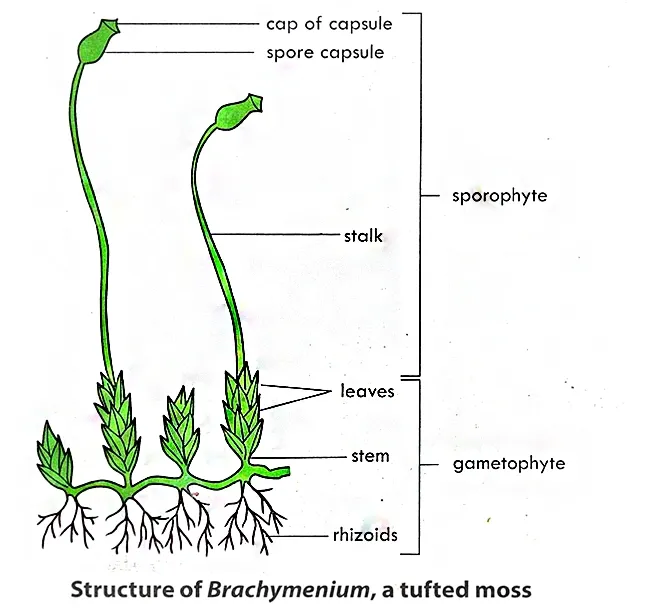Objectives
This blog post provides readers with the following objectives. The reader will be able to:
Moss Plant
Kingdom: Plantae
Division: Bryophyta
Habitat of Moss Plant
Mosses are found in damp soil, tree bark, rocks, or concrete.
Examples of Moss plants
Example of mosses include Marchantia, Riccia, Sphagnum, Funaria, Polytrichum, etc.
Structure of Moss Plant
Mosses are small non-vascular plants and therefore lack tissue for transporting water and nutrients. They do not have true roots, stems, or leaves because they lack vascular tissue. Rhizoids are root-like structures that anchor them to their substrate and absorb water and nutrients. The leaves are simple, spirally arranged and only a single cell thick with no cuticle, stomata or internal air spaces. The rhizoids, stems and leaves together constitute the gametophyte. At a in life of moss, the gametophyte produces a stalk called seta, with a capsule having a cap called calyptra at its tip. This constitutes sporophyte.
The spore-bearing sporophyte is dependent on the gametophyte, that is, it derives its nutrition from the gametophyte. The gametophyte is independent. Bryophytes are generally restricted to moist areas because the sperm are flagellated and therefore require at least a film of water to swim to the egg.
Life Cycle of Moss Plant
The life cycle of Bryophytes is described as alternation of generation. It’s a life cycle of an organism, where asexual spore producing (sporophyte) generation alternates with a sexual gamete producing (gametophytes) generation.
The moss life-cycle starts with a haploid spore that germinates to produce a branching filamentous or thalloid structure called protonema (plural: protonemata). The protonema grows into green gametophyte that is structurally differentiated into rhizoids, stems and leaves. The tips of the gametophyte stems or branches develop sex organs of the mosses. The female organs are known as archegonia (sing. archegonium). The male organs are known as antheridia (sing. antheridium). The archegonium produces eggs called oosphere and antheridium produces biflagellate sperms called antherozoids,
In the presence of water, sperm from the antheridia swim to fertilize the egg in the archegonium, to form a zygote. The zygote develops into sporophytes. The sporophyte body comprises, a capsule with a cap called the calyptra, a long stalk, called a seta and a foot embedded in the gametophyte tissue. Mature capsule undergoes meiosis to produce haploid spores. The capsule burst to release the spores, which germinate to produce a branching protonema.

.webp)








0 Comments